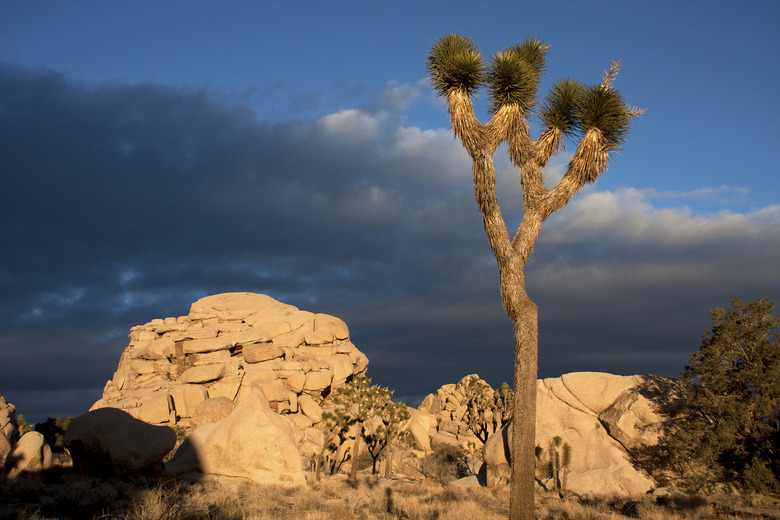Interesting Facts About The Mojave Desert
Located in the southwestern United States, the Mojave Desert includes both the infamous Death Valley and slightly less infamous Las Vegas Valley. An existence in the Mojave means coping with a range of extreme conditions. The desert is home to numerous unique and interesting plant and animal species that have adapted to this arid landscape.
Extreme Conditions
Extreme Conditions
The Mojave is considered a hot-cold desert, meaning its hot in the summer — but also extremely cold in the winter, dipping below freezing at night. These extremes have led to plant and animal species that are uniquely adapted to the Mojave. The desert averages about five inches of precipitation a year. According to the US Geological Survey, the desert's climate has changed significantly over the past century and will continue to change in the future.
Carbon Sink
Carbon Sink
With many scientists projecting that atmospheric carbon will continue to rise and drive climate change around the globe, some are looking to see how much carbon dioxide will be absorbed by so-called "carbon sinks" like the rainforests or massive plankton blooms in the sea that take in CO2 for use in photosynthesis. However, a recent study from a team of American scientists published in the journal Nature revealed that the Mojave Desert is actually a carbon sink — despite the lack of a significant amount of vegetation. The study researchers said their findings mean other arid ecosystems should be considered when making global carbon cycle calculations.
Interesting Plant Life
Interesting Plant Life
Although the Mojave isn't home to a large amount of plant life, it is home to mistletoe, a well-known Christmas decoration — and a parasite. Mistletoe seeds are often dropped on desert trees where they germinate and penetrate the bark of their host tree using a modified root. Mistletoe can generate some sustenance through photosynthesis, but the plant gets additional nutrients and water from its host though this modified root. This parasitic action is rarely sufficient to kill the host. The desert is also home to slow-growing Joshua trees, which are actually not trees, but water-storing succulents. These plants grow to between 20 and 70 feet in height and live around 150 years.
Interesting Animal Life
Interesting Animal Life
With its ten hairy appendages, intimidating size, and powerful jaws — the camel spider is probably one of the most frightening creatures living in the Mojave. However, the arachnids are actually harmless to humans. Also known as "wind scorpions," camel spiders have been known to run up to 10 mph. With its crown of horns and toad-like look, the short-horned lizard, or "horny toad," is another interesting creature. When threatened by predators, the lizard puffs up its body to almost double its normal size. If the predator isn't intimidated by the size increase, the lizard is then capable of squirting noxious blood from its eyes.
Cite This Article
MLA
Smith, Brett. "Interesting Facts About The Mojave Desert" sciencing.com, https://www.sciencing.com/interesting-mojave-desert-8579822/. 24 April 2017.
APA
Smith, Brett. (2017, April 24). Interesting Facts About The Mojave Desert. sciencing.com. Retrieved from https://www.sciencing.com/interesting-mojave-desert-8579822/
Chicago
Smith, Brett. Interesting Facts About The Mojave Desert last modified March 24, 2022. https://www.sciencing.com/interesting-mojave-desert-8579822/
